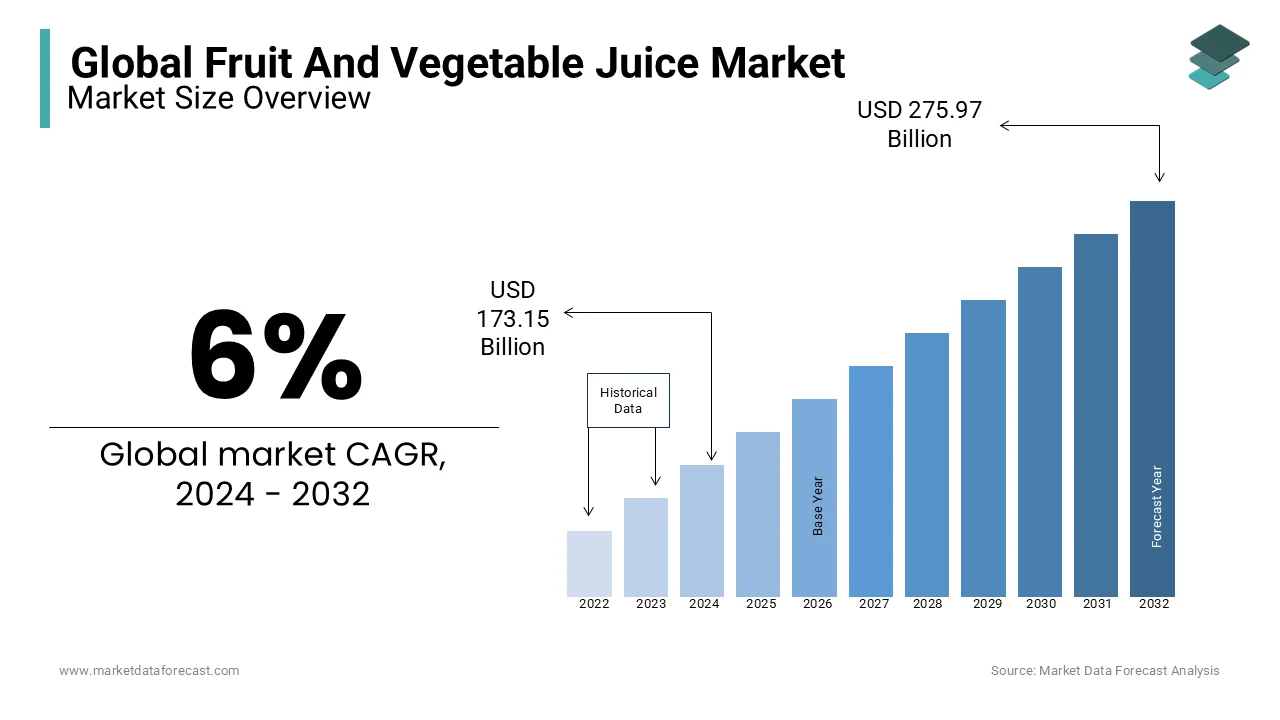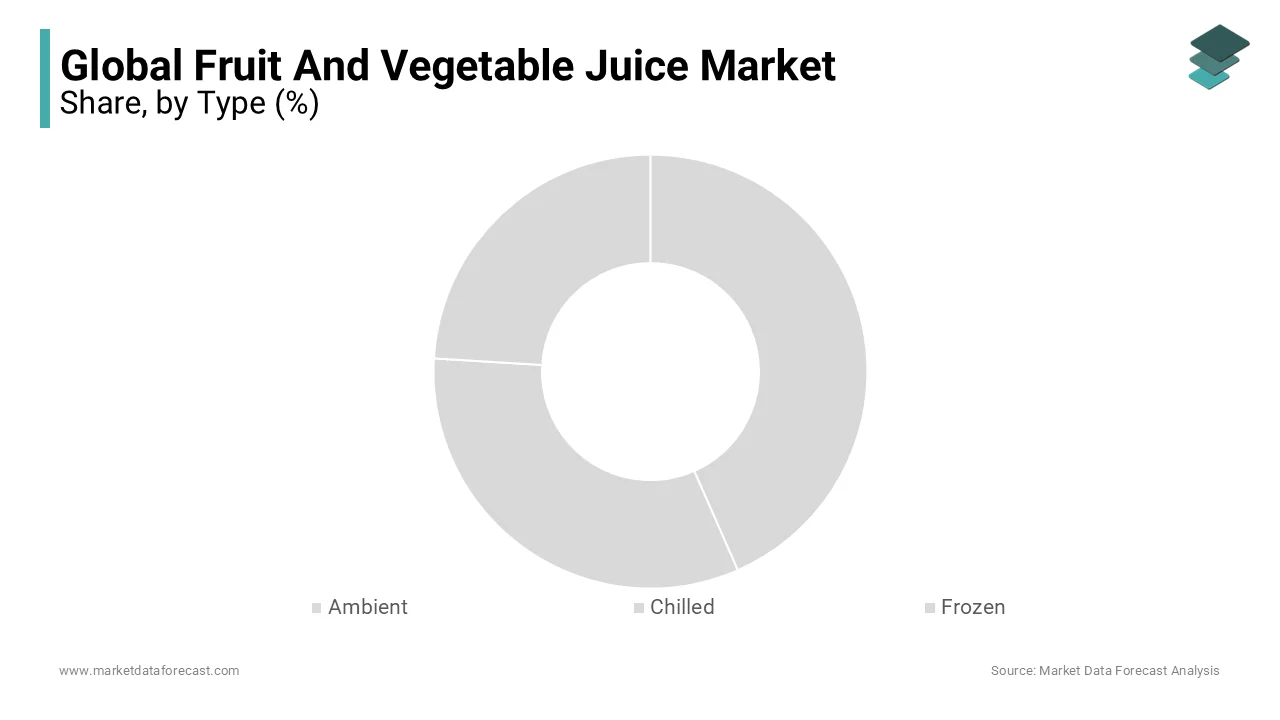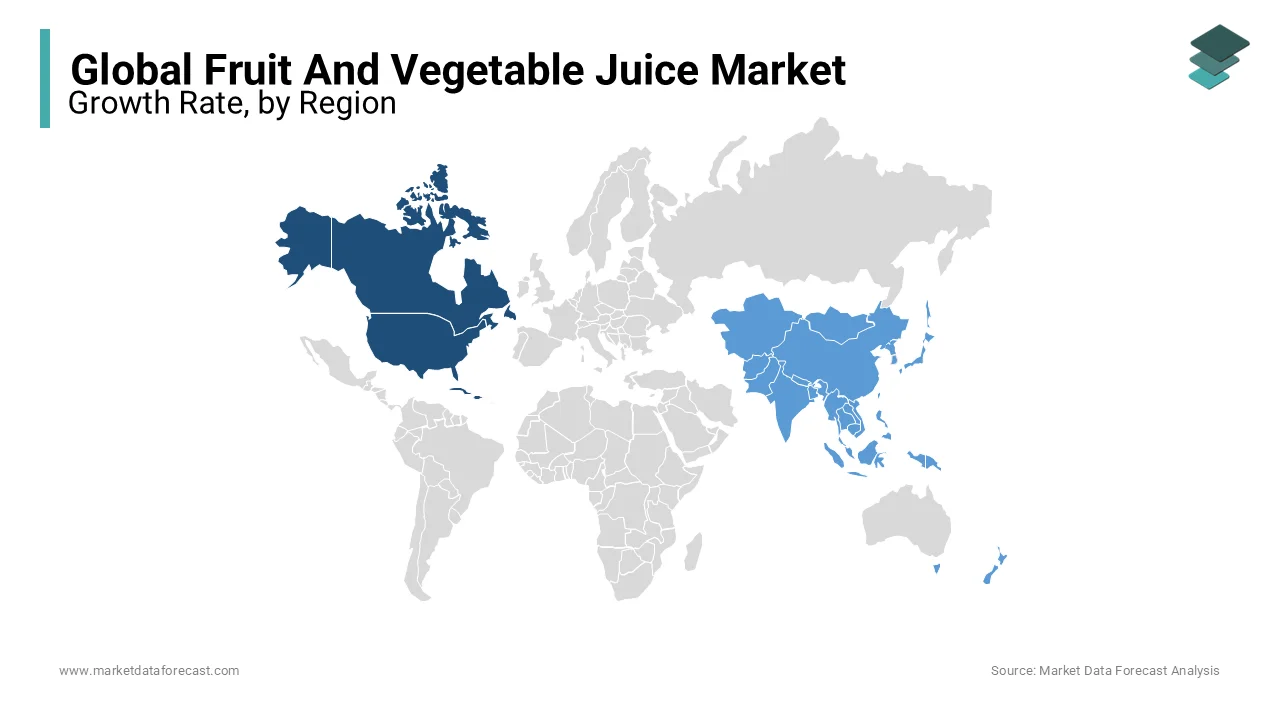Global Fruit And Vegetable Juice Market Size, Share, Trends, & Growth Forecast Report By Flavor (Fruit (Mango, Apple, Guava, Pomegranate, Grape, Orange, Lemon, Pineapple & Others), Vegetable (Carrot, Beetroot, Tomato, Pumpkin &Others), Mixed Fruits & Vegetables), Type, Concentration, Category, Distribution Channel, And Region (North America, Europe, Asia Pacific, Latin America, Middle East & Africa), Industry Analysis (2025 To 2033)
Global Fruit And Vegetable Juice Market Size
The global fruit and vegetable juice market was valued at USD 173.15 billion in 2024 and is expected to be worth USD 183.54 billion in 2025 and USD 292.53 billion by 2033, progressing at a growth rate of about 6% between 2025 and 2033. The market is expected to grow in developing countries.

Fruit and Vegetable Juice, enhanced with functional ingredients, provides new product opportunities for companies that understand and understand consumer preferences to meet their expectations and develop and market useful fruit juice products. Omega-3, fiber, vitamins, bioactive compounds, and probiotic bacteria are some of the functional ingredients that provide tremendous opportunities for the juice industry. Vitamins are also added to fruit juices to improve the nutritional profile of fruit juice products. Vitamin D, vitamin E, vitamin A, and vitamin C are some of the essential vitamins that are added to fruit juices. A variety of government initiatives are underway around the world to increase the consumption of strengthened food and beverages, especially in developing countries such as China and India. The market for fruit and vegetable juices demands the beverage industry sector as consumer awareness and preference for health products increases.
MARKET DRIVERS
The increase in consumption of this product, changes in consumer tastes, the adoption of healthier eating habits, and the appearance of cold juice are the main factors that accelerate the growth of this market worldwide. The growth of the global fruit and vegetable juice market is driven by the growing demand for healthy foods from an increasingly sturdy consumer base. The increasing popularity of cold-pressing juice is one of the main factors affecting the growth of this juice market worldwide. Cold-pressed juice preserves the vitamins, minerals, and enzymes that are lost during the heating and oxidation steps of the traditional juice-making process. Few consumers know the benefits of mixed fruit and vegetable juices, especially those in developing countries. This prompted diverse juice vendors in the market to conduct marketing and advertising activities to increase consumer awareness of the benefits of these juice products.
Health and fitness have played an essential role in today's world, and there have been potential changes in making healthy juices from soda pop. In many cases, fruit juices are incorporated as part of the daily breakfast routine, as they provide a daily quota of minerals and vitamins that are offered daily. As the number of consumers worldwide increases along with healthy lifestyle trends, the demand for fruit juices has increased dramatically, leading manufacturers to develop new variants. This drink accelerates the growth of the market since it has no nutritional value compared to the fruit and vegetable juices sold in the market. Therefore, a large number of people are switching to the consumption of natural juices that provide nutritional drinks and offer fewer disadvantages than soft drinks. Cold-pressed juices generally consist of natural extracts of fruits and vegetables and mixtures thereof.
In most cases, they are not pasteurized and consumed within a few days with refrigeration. Since this process does not use heat or oxygen, there is no loss of nutrients. With the arrival of this product, many have chosen healthier and more nutritious options. Consumption of soft drinks such as cola and scented soft drinks is declining worldwide, as sugar content, artificial colors, phosphoric acid, artificial sweeteners, and caffeine can adversely affect the human body. As a result, many consumers are switching from carbonated beverages to natural fruit juices. Changes in consumer lifestyles and eating habits have accelerated the growth of the market by increasing the intake of cheap, healthy and fast nutritional sources, such as packaged fruit juices.
MARKET RESTRAINTS
The fructose corn syrup used to make this juice drink has spoiled consumer interest by compromising its healthy image. To revive the beverage market, manufacturers offer more robust options in the category with claims like "no high-fructose corn syrup" on the label.
REPORT COVERAGE
|
REPORT METRIC |
DETAILS |
|
Market Size Available |
2024 to 2033 |
|
Base Year |
2024 |
|
Forecast Period |
2025 to 2033 |
|
CAGR |
6% |
|
Segments Covered |
By Flavor, Type, Concentration, Category, Distribution Channel, And Region |
|
Various Analyses Covered |
Global, Regional and Country Level Analysis; Segment-Level Analysis; DROC; PESTLE Analysis; Porter’s Five Forces Analysis; Competitive Landscape; Analyst Overview of Investment Opportunities |
|
Regions Covered |
North America, Europe, APAC, Latin America, Middle East & Africa |
|
Market Leaders Profiled |
Del Monte Foods, Del Monte Foods Corporation, Pepsi Co, Welch’s, Nestle, Ocean Spray Cranberries, Dr. Pepper Snapple Group Inc., and Citrus World |
SEGMENTAL ANALYSIS
By Type Insights

The chilled segment is ascribed to lead the growth rate of the fruit and vegetable juice market. Many people opt for chilled fruit juices to stay hydrated, especially during heat days, which is likely to showcase great opportunities for the market. The frozen segment is all set to hit the highest CAGR by the end of 2032.
By Flavour Insights
The fruits segment is leading with a significant share of the market. Increasing awareness of drinking fruit juices to maintain proper health in a busy lifestyle is eventually surging the growth rate of the market. The penetration of the most advanced technologies in the F&B industry poses the availability of various fruit flavors throughout the year, irrespective of season. Fruit juices are rich in vitamin C, Vitamin A, and Magnesium, which are likely to maintain good health. Working-class people mostly opt for fresh juice, which is easily available at affordable prices and gears up the growth rate of the market. Also, the growing awareness of avoiding the risk of chronic illnesses by maintaining proper health substantially encourages people to rely on these products.
The vegetable juice segment is attributed to have the fastest growth opportunities during the forecast period. Carrot and beetroot segments have led to the highest share of the market in the past few years. In recent years, people have been more likely to make fresh vegetable juice, which is highly nutritious and healthy and keeps away from toxins, solely to enhance the growth rate of the market. The combination of these vegetables is also good for improving cardiovascular health, digestion, and skin health, which is ascribed to bolster the growth rate of the market during the forecast period.
By Concentration Insights
The 100% juice segment has been gaining huge traction over the share of the fruit and vegetable juice market in recent times. People's concentration on leading a healthy lifestyle by drinking whole fruit juice without mixing any preservatives or any other substances is greatly influencing the growth rate of the market. The rising incidences of various health-related issues are greatly influencing people to focus on healthy food habits, which is escalating the growth rate of the market. The 25-99% segment is attributed to having the fastest growth rate during the forecast period.
By Category Insights
The non-carbonated segment is anticipated to have the highest growth rate during the forecast period, whereas the carbonated segment is expected to have a significant share of the market. Rising popularity for non-carbonated juices, which are freshly made rather than frozen for many days, is acquiring huge demand all across the world, which is likely to elevate the growth rate of the market.
By Distribution Channel Insights
The convenience stores segment is likely to have the fastest growth opportunities, whereas the on-trade segment is also anticipated to have a significant share of the market throughout the forecast period. A growing number of people using food delivery applications through smartphones is actually elevating the demand for the fruit and vegetable juice market
REGIONAL ANALYSIS

North America dominated the global fruit and vegetable juice industry as it consumed a lot of juice and increased demand for healthier alternatives, such as cold juices and mixed fruit and vegetables. Europe lagged far behind North America in terms of market share. The presence of cognitive consumers and the adoption of healthy eating habits are vital factors for the industry's prosperity in this region. In the Asia-Pacific region, large population groups exist, and consumer awareness is supposed to increase in countries such as India and China. Therefore, the area is assumed to reach the highest CAGR during the forecast period.
The trend observed in the Asia Pacific region is the preference for small single-serving PET bottles, which are priced lower than large containers. The demand for mango, apple, pineapple, and orange juice looks excellent in this country and promotes market growth. As the demand for healthier options increased in the region, manufacturers had to develop more natural and nutritious products. Countries like Belgium, France, the Netherlands, the United Kingdom, and Germany are the largest consumers of this juice worldwide. Emerging countries in the region, such as the center and east, such as Poland, are also expected to make considerable profits in the near future as demand in the region increases. Retail giant AS Watson Group continued to dominate the juice business. The company's leading brands dominate various sectors of juice.
KEY MARKET PLAYERS
Del Monte Foods, Del Monte Foods Corporation, Pepsi Co, Welch’s, Nestle, Ocean Spray Cranberries, Dr. Pepper Snapple Group Inc., and Citrus World are a few of the notable players in the global fruit and vegetable juice market.
RECENT HAPPENINGS IN THE MARKET
- In 2019, Heinz Co Australia launched a new variant of the Golden Circle brand, an artificial coloring without sugar and flavorless juice.
- In 2019, Eckes-Granini was the largest juice brand for value sales outside of commerce, and Aldi confirmed the leadership in terms of volume outside trade.
- Fruit Tree Fresh Less Sugar & Calorie was launched in late 2018, and Ribena juice was not sweet, so it was released in 2019.
MARKET SEGMENTATION
This research report on the global fruit and vegetable juice market has been segmented and sub-segmented based on flavor, type, concentration, category, distribution channel, & region.
By Flavor
- Fruit
- Mango
- Apple
- Guava
- Pomegranate
- Grape
- Orange
- Lemon
- Pineapple
- Others
- Vegetable
- Carrot
- Beetroot
- Tomato
- Pumpkin
- Others
By Type
- Ambient
- Chilled
- Frozen
- Others
By Concentration
- 100% juice
- 25-99% juice
- 4 <25% juice
- Flavored
- Others
By Category
- Carbonated
- Non-Carbonated
By Distribution Channel
- Convenience stores
- Supermarkets or hypermarkets
- Independent retailers
- On-trade
By Region
- North America
- Europe
- Asia Pacific
- Latin America
- Middle East and Africa
Frequently Asked Questions
1. What are the main drivers of growth in the fruit and vegetable juice market?
Factors such as increasing health awareness, demand for natural and organic products, convenience, and innovative product offerings drive growth in the fruit and vegetable juice market.
2. What are the challenges faced by the fruit and vegetable juice market?
Challenges include competition from other beverages, concerns about sugar content, perishability of fresh juices, supply chain issues, and regulatory constraints related to labeling and health claims.
3. What is the global outlook for the fruit and vegetable juice market?
The market is expected to grow, driven by increasing health consciousness, urbanization, changing dietary preferences, and the introduction of new juice flavors and varieties.
Related Reports
Access the study in MULTIPLE FORMATS
Purchase options starting from $ 2500
Didn’t find what you’re looking for?
TALK TO OUR ANALYST TEAM
Need something within your budget?
NO WORRIES! WE GOT YOU COVERED!
Call us on: +1 888 702 9696 (U.S Toll Free)
Write to us: [email protected]